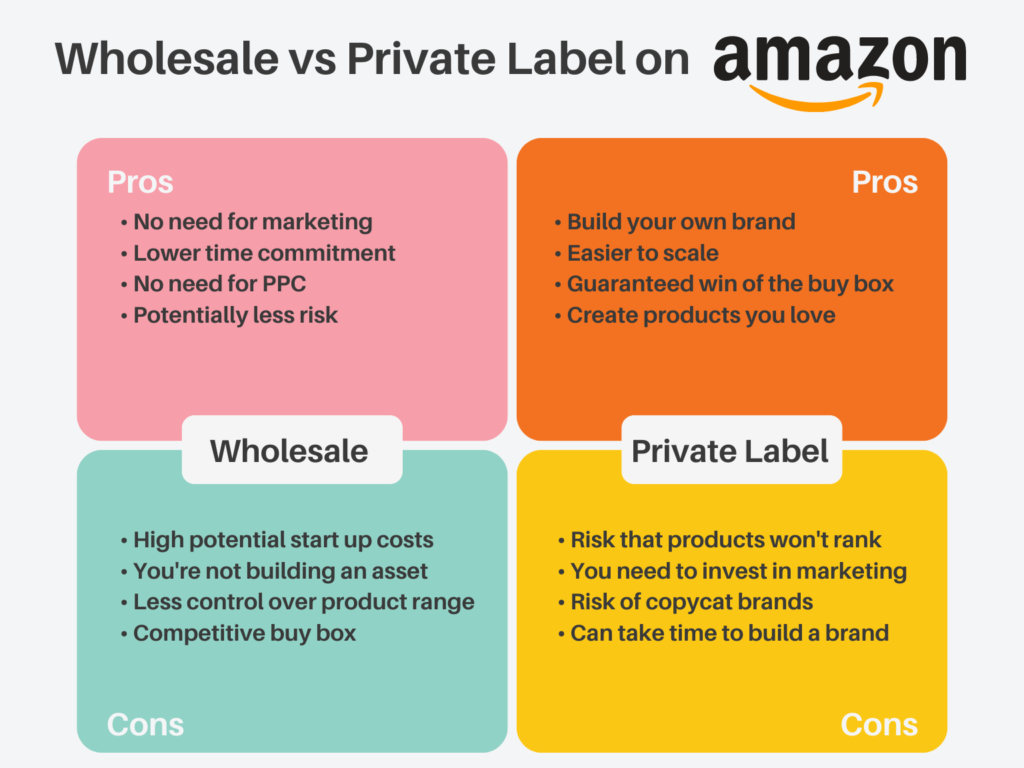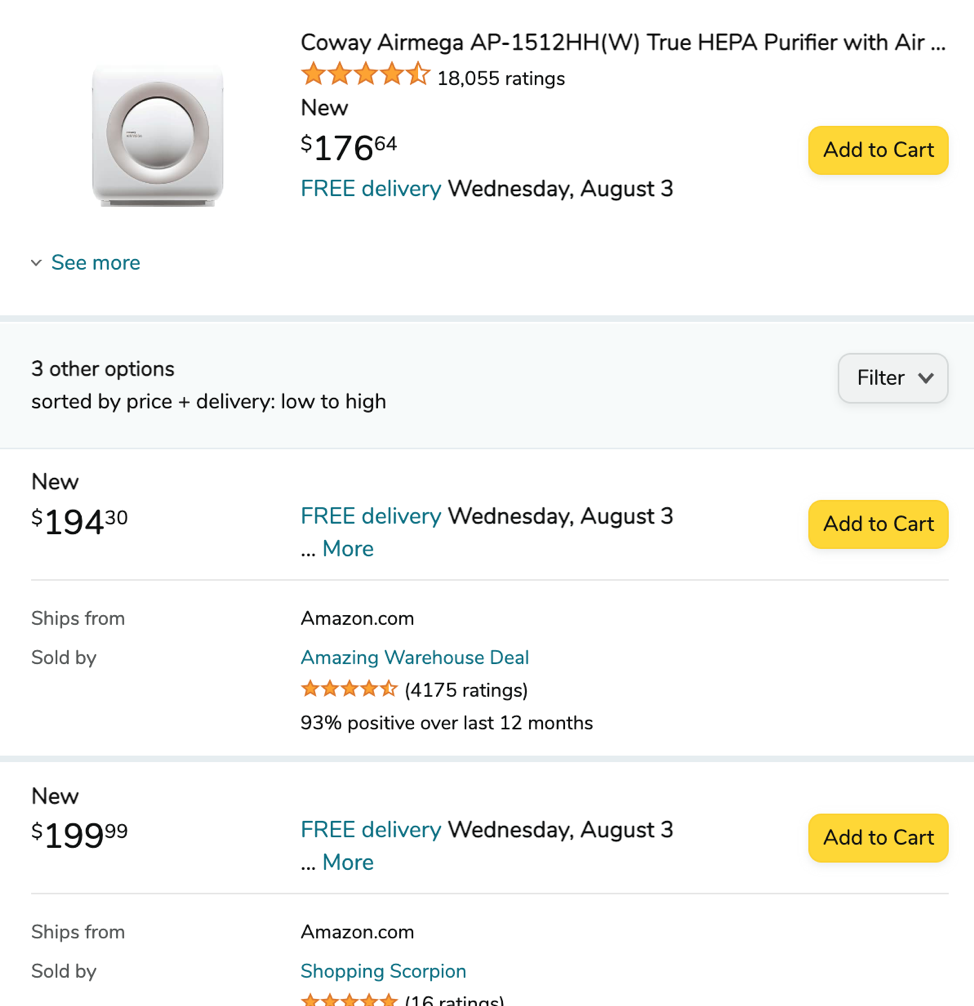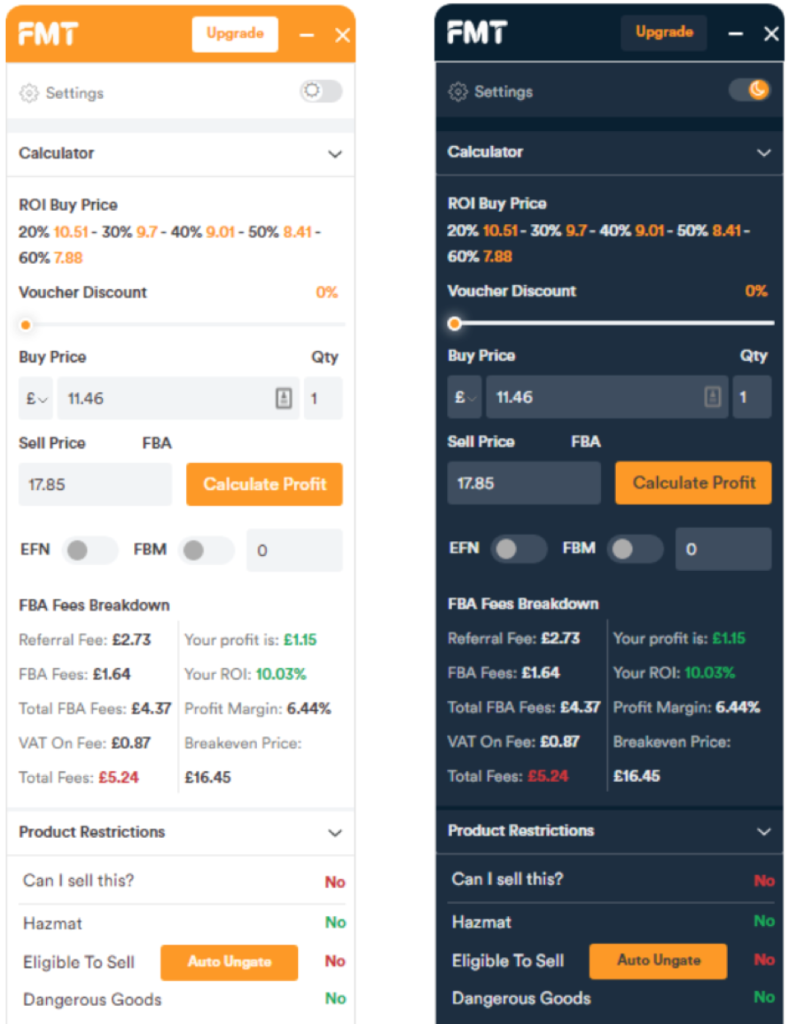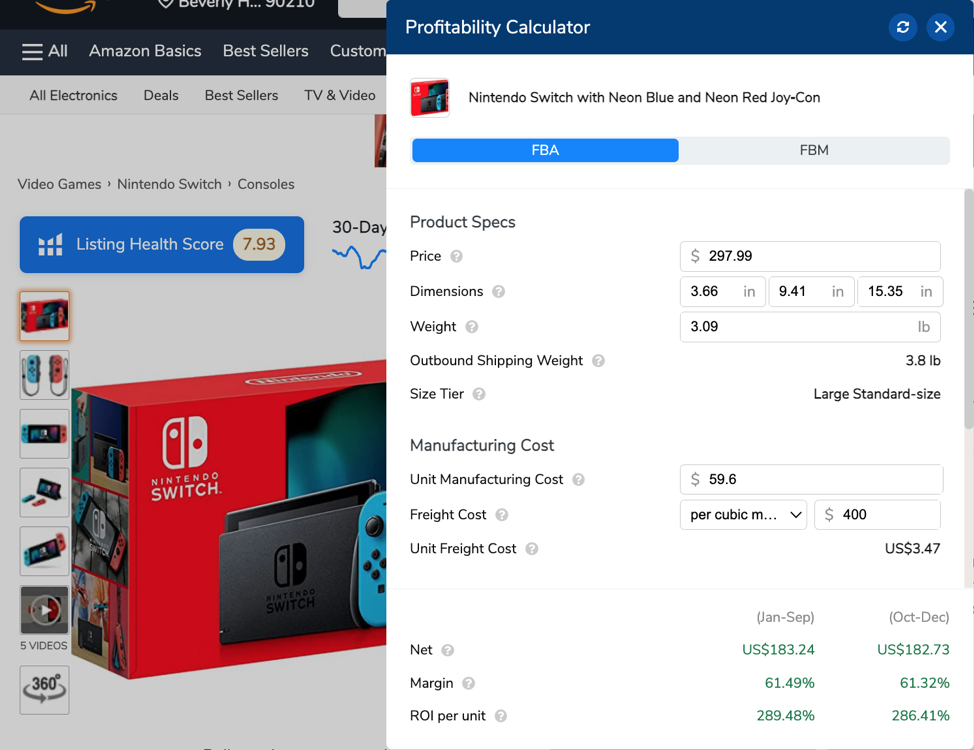Selling on Amazon is a lot of work, and one of the things that takes the most effort is developing products and creating the brand and marketing.
With the wholesale model, you take all of that effort out of the process, as you’re selling products that already exist, and sometimes already have a listing on Amazon.
Sounds easy? Well not quite, you still need to find the products, build the relationships with suppliers and work out the operations and logistics.
But if you have more of an operations brain, rather than a marketing brain, then the Amazon Wholesale model could be a perfect business model for you.
Wholesale on Amazon is a very popular business model, and in this guide, we dive into the pros and cons and what you need to consider before going into selling wholesale.
What is Amazon Wholesale?
Selling wholesale on Amazon involves buying products in bulk from manufacturers or distributors and then selling them on Amazon to a customer base of over 197 million people.
If you work with a large manufacturer then they might already be selling on Amazon, however, if you’re working with a smaller manufacturer then you might be the only one selling their products on Amazon.
Amazon Wholesale is different to retail arbitrage in that you’re dealing with large quantities of product whereas retail arbitrage usually involves selling one-off or low-quantity items.
How does selling Wholesale on Amazon Work?
Selling wholesale on Amazon is when you buy products in bulk from manufacturers, distributors, or brands and sell them on Amazon. In theory, you would pay less than the RRP and fees and anything remaining would be your profit.
The key features of selling wholesale on Amazon are very similar to other business models such as private label and retail arbitrage. You will probably be using the same methods and you might also be using FBA. So you will need to understand everything about how to sell on Amazon, which I have outlined in this huge guide to Amazon FBA.
When you sell wholesale on Amazon, you have the choice of using Amazon’s fulfillment (Fulfilled by Amazon or FBA) or doing the fulfillment yourself (Fulfilled by Merchant or FBM). If you use FBM you are responsible for the packing of the products, storage, shipping, and managing the returns process. Whereas if you use FBA, Amazon handles all this for you for a fee.
Personally, I would always use FBA as Amazon has a really amazing distribution network set up, and handling orders and returns can be a lot of work. I would way rather spend my time growing the business and choosing new products, rather than going to the post office to ship my products.
Wholesale on Amazon vs. other Amazon business models
Wholesale is a great business model if you already have access to suppliers who can provide you with good products at a great price. If you don’t have access to suppliers already, it might be a tricky business model as many brands don’t like working with brand new sellers.
Private Label vs Wholesale on Amazon
Private label selling is the model most people associate with selling on Amazon, and the reason for that is you can create a brand. To start a private label brand you need to do extensive product research, or have a great product idea, and then get a manufacturer to make that product for you.
Creating a brand is a really good way to not only start making money from sales but also to create an asset that you can sell in the future. I am planning on selling my private label business this year, and hopefully, that will bring me a really nice amount of money I can use for future projects.
As a private label seller, you are fully in control of your brand, and you can create something really amazing that you are passionate about.
Online Arbitrage vs Wholesale on Amazon
Online arbitrage is the other selling model many people associate with selling on Amazon. Arbitrage is very similar to selling wholesale, but the difference between Amazon Wholesale and Online Arbitrage is volume. Wholesalers will expect to sell many units of the same item, whereas arbitrage sellers might only be selling a small amount.
Many private label sellers started out as online arbitrage sellers, as it has traditionally been the easiest Amazon business model to start. To sell products using the online arbitrage model, you find cheap products on websites, and then get them shipped into Amazon’s warehouse for sale at a higher price.
Retail arbitrage is similar to online arbitrage, except that you find products in physical retail stores for a cheap price and then sell them on Amazon. Retail arbitrage sellers and online arbitrage sellers spend a lot of time looking for products to sell, so whilst it is easy to get started, it can be very time-consuming.
The buy box for Private Label and Wholesale
When you sell products Private Label, you will generally be the only seller of a product. This means you are virtually guaranteed to be the buy box winner. On Amazon, winning the buy box is super important, as nearly all shoppers simply click the buy button. If you aren’t winning the buy box, you will probably lose out on the sale.
When you sell wholesale on Amazon, you are nearly always competing for the buy box, as other people may also be selling the same products. This means you need to be really competitive with your pricing, as the cheapest item usually wins the buy box.
There is some repricing software you can use to help you manage your pricing automatically such as Repricer Express.
Pros of selling Wholesale on Amazon
✅ No marketing required
When you sell wholesale, the manufacturer has already done all the hard work to brand, develop and market the product. This means you don’t need to worry about marketing materials, social media, or packaging design, all of which can free up a lot of time and resources.
You also don’t need to write the product description or create product images.
If the product is already selling on Amazon, you simply use the existing listing or if it’s new to Amazon, the manufacturer will provide you with the content and imagery for the product listing.
✅ Good profits
With Amazon Wholesale you have great profit potential. You also typically have far fewer costs than if you’re selling your own products on Amazon (also known as private labeling) since you don’t have all the marketing expenses that come with launching and selling a product such as photography, packaging design, or advertising.
With Amazon Wholesale you should have a better idea from the outset of what your profit margin is likely to be since your costs are relatively fixed and you’ll know your expected retail price in advance.
Providing you negotiate a good deal with your manufacturer and select a product with good demand then you can make a really decent profit.
✅ Scalable
Once you’ve developed a good relationship with your distributor and discussed the initial investment, then you can quickly scale up by placing larger orders and selling more of their products.
Since you’re not spending time on marketing and you’re selling a product that already has a proven track record (if you’ve chosen the right product that is), then you can focus entirely on ordering more stock and ramping up your business.

Cons of selling Wholesale on Amazon
❌ Finding the right manufacturer can take time
It can take a while to find a manufacturer with the right products who are interested in partnering with you.
Manufacturers get a lot of approaches so you have to do a lot of research and be persistent.
If you like a product but the manufacturer isn’t interested in selling to you on a wholesale basis, it’s worth asking if they can put you in touch with their distributor (if they have one) as distributors often tend to be more open to partnerships.
❌ You still need to find the products
Likewise, finding the right products to sell can also take some time.
Tools like Helium10 can be helpful as they can show you how much demand there is for a particular product and estimated monthly revenue and fees, which you can use to assess whether a product is worth selling.
❌ Competition
If you’re selling a popular product then you could find yourself competing with other sellers on Amazon.
Generally, whether you get the sale or not will come down to price so it’s important that you negotiate a good cost price with your manufacturer so you can offer competitive pricing.
ou negotiate a good cost price with your manufacturer so you can offer competitive pricing.
❌ Being able to buy large quantities is an advantage…but not essential!
A successful wholesale business relies on having a strong relationship with your manufacturer and enough money to cover the upfront costs.
Being able to purchase large quantities of brand-name products from your manufacturer can often get you better terms and lead to a more profitable relationship down the road.
That’s not to say that all manufacturers will require you to place a large order from the outset – if you find a small, start-up manufacturer then you may be able to negotiate small orders to begin with – but it’s likely to help.
How much money can I make selling wholesale on Amazon?
The amount of money you can make selling wholesale on Amazon obviously depends on what products you are selling. The main thing is to find products that will have a good chance of selling.
When you are selling with the private label model, you are building a brand, so slower sales at first don’t necessarily mean a product is bad.
However, with wholesale you want to look for products that are selling at least 5-10 a day, hopefully even more, because otherwise, your margin will be too small.
How to find products to sell Wholesale on Amazon
Firstly, when you are looking through Amazon to find products to sell, you want to make sure that Amazon isn’t also selling the product. Amazon is sometimes quite sneaky as they can afford to sell products for a much smaller margin than you as they don’t have to pay fees.
You can see if Amazon is selling the product by clicking on the ‘Sold By’ section just under the buy box, and see if any other sellers are also selling the product.

As you can see here, Amazon Warehouse Deal is selling this Air Purifier. So this might be a product to avoid.
Ideally, you want to find small to medium-sized brands or wholesale suppliers that are established in their niche. Huge brands like Lego or Nike often won’t do wholesale deals unless you are a massive company.
A great brand to work with will be one that is relatively new and is seeing a lot of growth and has high-demand products. Maybe they are looking to grow their presence in a new online marketplace, or they are starting to see a growth in sales. It can be tricky knowing whether a brand is growing, so I like to use a few tools to find great products to sell.
They also need to be open to allowing third-party sellers, such as yourself, to sell their branded products.
Tools for Amazon Wholesale
FBA Multitool – This is my favourite tool for wholesale selling, as the chrome plug-in shows you lots of information about the ROI (Return on Investment). It is also one of the best value tools on the market.
The tool is designed for wholesale sellers who want to know how to find the best products. Some of my favourite features are:
- FBA & FBM Calculator: What will your profit be if you sell this product?
- Private Label Detector: You don’t want to sell private label products.
- Hazmat Checker: Make sure the product doesn’t have any Hazmat restrictions.
- Restriction Checker: Check if the product is in a restricted category such as baby or food.
- Amazon Fees Breakdown: Understand what the referral fee and FBA fee will be.
- ROI Buy Price: Ideally you want to be aiming for at least 30% ROI.
- Sales Estimator: Understand how many sales the product you are looking at will sell per day. This tool tracks the sales history, sales rank, and sales volume.

This is what the FBA multitool looks like
Helium 10 – This is the tool I use every day in my Amazon business. It shows you everything you need to know about selling on Amazon. It is a bit more pricey than FBA Multitool, but you get what you pay for in my opinion.
The tool isn’t just for wholesalers, but for any Amazon business model. It has tools to help you:
- Understand the sales volume of a product
- Find a private label product to sell and quality products to sell wholesale
- Manage your Amazon PPC advertising
- Understand your profit margin
- Track sales
- Research product categories
- And much more…
It really does show you everything you need to know about Amazon products. Helium 10 has some great information about how the product works on this link.
How to find wholesale brands to sell on Amazon
When you are finding products to sell for Private Label, you might start by looking for manufacturers on Alibaba or another sourcing website. However, with wholesale, you will be contacting the owners of the brands. This means you need to be able to sell yourself to them so you look like a legit wholesaler.
Dealing with brand owners is one of the main benefits of wholesale, as you don’t need to wait for products to ship from India, China, or wherever you are shipping from. You also won’t need to wait for the products to be manufactured.
This means you can be more agile with your inventory management.
Another benefit is you don’t need to spend time and money on marketing and branding. As you are selling other people’s products, you don’t need to think about marketing which leaves you more time to find brands to work with.
Unfortunately, one of the main negatives is that there isn’t a shortcut to finding brands who will work with you. Generally, you need to get in touch with the brand through their website or social media.
When you contact the brand, you will need to convince them that you are going to be a reliable partner who will help them sell more products or open up in new markets. Many brands are very reluctant to work with new sellers, so you need to make sure you are legitimately set up and also look very professional.
How to work with wholesale brands
You can really improve your chances of getting a brand to work with you by doing some work upfront:
Register your business as a limited company
Brands want to work with legitimate businesses. Set up as a limited (ltd) company or sole proprietor first and get a business license, then create a good-looking website. The website doesn’t need to be too complex, but it should show your information and make you look professional.
You may also need a wholesale license and resale certificate, depending on which country or state you are in, so check the local laws before starting.
Negotiate with brands
Before you contact brands, you need to make sure you are in a good position to help those brands grow. It is important to show the brands how you can sell their products.
Many of the brands will be suspicious of you selling products on Amazon as it isn’t always understood as a legitimate business opportunity.
So when you are speaking to the brands, you need to show them how you will bring value to their business and prove that you won’t be doing anything dodgy.
When you are doing your research, try and think of ways you can add value to their business. For example, if they aren’t on Amazon yet, you can demonstrate your expertise and how you will get them more sales. If they are already on Amazon, but their listings are poor, show how you can improve ROI by creating better images or text.
Show not tell is best here, so it is a good idea to have some examples of your previous work to share with the brands.
If the brands say no, keep a track of them because you might be able to go back to them at a later date.
How to work out your Amazon Wholesale profit
In order to make money selling wholesale on Amazon, you need to understand how the fees and costs will affect your profit margin and ROI.
The first thing you need to check is the selling price of the product you are researching. You need to make sure you can profitably sell your products at the lowest price, or preferably, an even lower price. If you can’t do this, then move on to another product, as it is unlikely you will win the buy box.
Amazon Wholesale product fees
Amazon’s fees for wholesale products are the same as other business models. For most product categories the referral fee is 15% and the FBA fees vary by the size and weight of the product.
Helium 10 has a great tool called the profitability calculator that can help you work out the fees.

Helium10’s Profitability Calculator
Finding profitable products is obviously key. The profitability calculation is quite simple using this tool, if the sales price is more than the fees plus the wholesale price and shipping cost, then you are profitable.
I like to aim for at least 30% ROI with Amazon Wholesale, as any less than that, and the margins become too tight.
What are the monthly sales?
You need to know what the monthly sales are so you can plan how much stock you will need. Again, I use a tool like FBA multitool or Helium 10 X Ray to work out how many sales there are per month.
Once you know how many potential sales there will be, you can work out how much stock you will need to order. Ideally, you will need to keep 2-3 months’ stock available in an Amazon warehouse or FBA fulfillment center.
This could mean ordering hundreds of units, so make sure you have enough capital for the upfront investment.
Is Amazon Wholesale right for you?
The Amazon Wholesale business model isn’t the easiest way to start selling on Amazon, but it can be very lucrative.
If you enjoy building relationships and you would rather not spend time developing and marketing your own products then Amazon Wholesale could be a great model for you.
Working with wholesale brands isn’t the same as working with a private label manufacturer. You will need to build up a good reputation in order to work with top brands, and you will also need to do a lot of research to find the best brands to work with. But if you find a reliable supplier, you could find a great partner to work with for a long time.
Like any business, it takes some work upfront to find the right products and manufacturers but it can lead to a very profitable and scalable business in the long run.
You might also like:

1 thought on “How to sell wholesale on Amazon for beginners”
online business